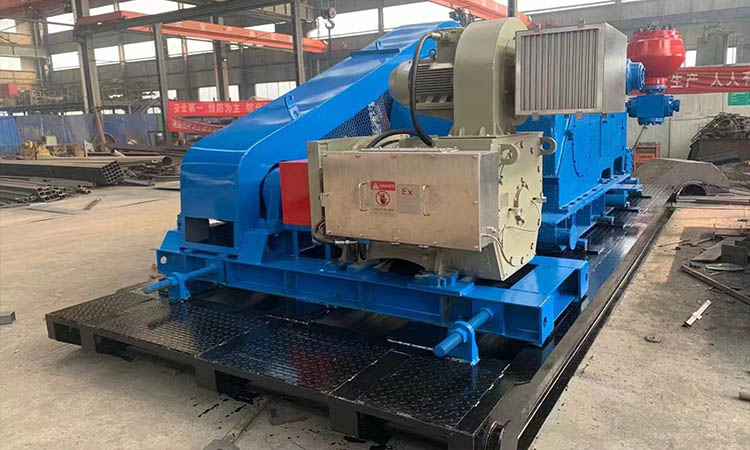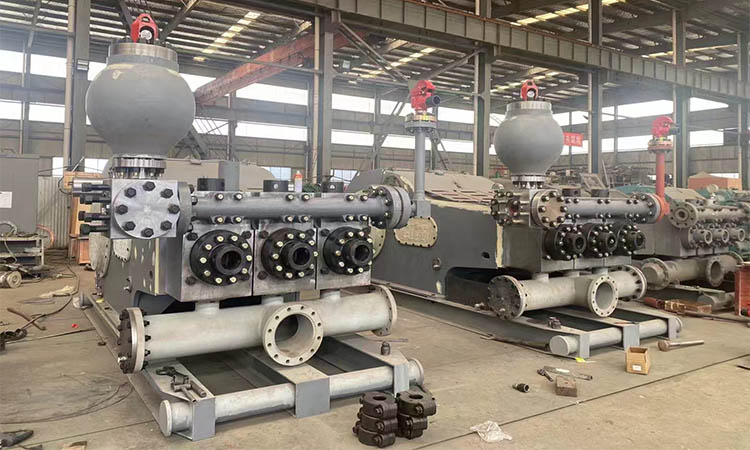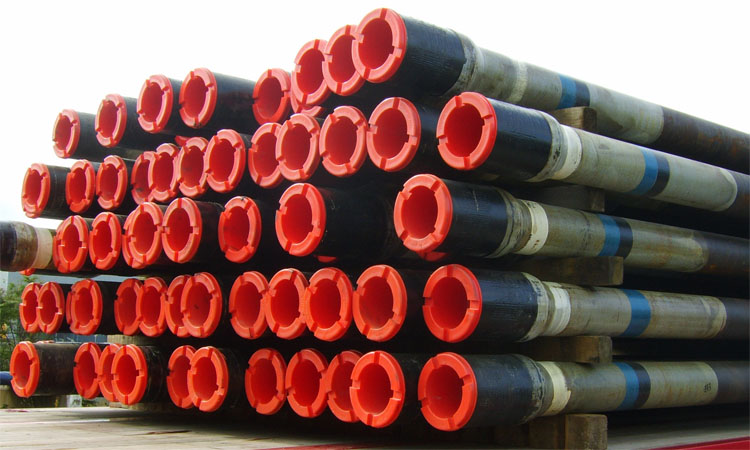Routine maintenance and inspection of mud pump
1) Daily maintenance
2) Weekly maintenance
3) Monthly maintenance
4) Annual maintenance
5) Other matters that need to be paid attention to during maintenance

Daily maintenance
1. After stopping the pump, check the oil level of the power end, gear oil and chain oil.
2. Observe the working condition of cylinder liner and piston. If it is found that the leaking mud exceeds the normal level, the cylinder liner and piston must be replaced with new ones.
3. Check the cylinder liner cavity. If there is a large amount of mud sedimentation, it should be cleaned.
4. Check whether the water in the spray pump water tank is sufficient, and replenish it in time. If the cooling water is contaminated, replace it, and clean the water tank simultaneously.
5. Check the inflation pressure of the discharge air bag to see if it meets the requirements.
6. Check the reliability of the shear pin safety valve and replace it if necessary.
7. Check the changes in the lubricating oil pump pressure gauge. The chain lubricating oil pump pressure should be between 20-30 PSI. If the pressure is found to be very small (0.035MPa) or no pressure, check the filter in time to see if there is any cold blockage.
8. Before tightening the cylinder cover and valve cover, first fill the threads with grease, and check whether there is any looseness every 4 hours.
9. Always observe the alarm holes of the valve cover, cylinder head, and cylinder liner seals (including the seal between the wear plate and the hydraulic cylinder). If mud flows out, the corresponding sealing rings should be replaced in time.

Weekly maintenance
1. Disassemble the valve cover and cylinder head every seven days, remove the sludge, clean and apply molybdenum disulfide compound calcium-based grease, and check if the inner sleeve of the valve guide sleeve is obviously worn (the gap between the valve guide rod and the guide sleeve exceeds 3mm) should be replaced.
2. Check the use of the valve and valve seat, and replace the severely worn or punctured valve body, valve rubber and valve seat (when replacing the valve seat, pay attention to replacing the valve body simultaneously). Check the valve spring and replace the broken or lost valve spring in time.
3. Check the piston locking nut. If it is corroded or damaged, replace it (because generally after tightening the nut three times, the sealing ring embedded in it has lost its locking ability)
4. Pour water from the plug of the drain hole cover until oil is seen.
5. Check and clean the filter in the lubricating oil pump pipeline once.
Monthly maintenance
1. Inspect all stud bolts and nuts on the fluid end. For example, cylinder head flange nuts, nuts connecting the liquid cylinder and the frame, as well as connecting bolts and nuts for the suction pipeline and discharge pipeline, etc. If it becomes loose, it must be tightened again according to the required torque.
2. Check the sealing ring in the stuffing box of the middle tie rod. If it is damaged, it must be replaced. Generally, it should be replaced at least once every three months. Pay attention to the oil seal position when replacing it.
3. Disassemble and clean the filter cartridge installed in the discharge filter.
4. Change the dirty oil in the power end oil pool and crosshead sedimentation oil tank every six months, and clean these oil tanks simultaneously.
Annual maintenance
1. Check whether the crosshead guide plate is loose and whether the crosshead running clearance meets the requirements. You can add a spacer under the guide plate to adjust it. When disassembling the crankshaft assembly, you can rotate the straight head 180° before use.
2. It is recommended to conduct a comprehensive inspection of the entire pump every two or three years. Check whether the main bearing, eccentric bearing, crosshead bearing, and pinion shaft bearing are worn or damaged. If they can no longer be used, they must be replaced with new ones.
3. Check the wear of the gear. If the wear is serious, the crankshaft and pinion shaft must be installed simultaneously and the unworn side of the tooth surface must be used.
Other matters that need to be paid attention to during maintenance
1. Before installing the clamp, the 25° cone surface must be wiped clean.
2. When replacing the cylinder liner, the cylinder liner sealing ring must be replaced together.
3. After stopping the pump in winter, the mud in the valve cavity and cylinder liner must be drained and flushed clean.
4. Each inspection window of the pump should be properly covered to prevent dust, sand, water, etc. from being mixed into the lubricating oil.
5. The discharge air bag can only be filled with inert gases such as nitrogen. It is prohibited to fill it with flammable and explosive gases such as oxygen, hydrogen, etc.
Patrol inspection and fault prevention during mud pump operation
1. Whether the pressure of the oil lubrication pump is within (20-30Psi).
2. Listen to determine whether there is any horizontal or vertical abnormal sound at the liquid end.
3. Observe whether the clamp bolts are loose and whether the tail of the piston is leaking mud when operating.
4. Observe whether mud is leaking from the three warning display holes of the cylinder liner flange seat, cylinder liner gland seat, and upper valve gland of the hydraulic cylinder.
5. Observe whether the cylinder liner is shaking, loosening or moving.
6. Observe whether the pump pressure is stable and whether the water hose swings.
7. Test the driving shaft bearing, crankshaft bearing and frame for local overheating (temperature rise <70°C)
8 Listen to determine whether there is any impact noise at the power end
9. Observe whether the spray pump is leaking or the water spray volume is reduced.
10. Observe whether the mud purification is effective and whether there are any grinding substances in the mud.
11. Check whether the opening and closing positions of the ground manifold gate group are correct to prevent short mud circulation.
12. Observe whether the seals are leaking and whether the fasteners are loose at any time.
13. Use the special tools provided with the pump correctly and do not operate in violation of regulations.
Sino Mechanical Equipment provides various oil drilling equipment, such as: Workover Rigs, drilling mud pumps and accessories,BOP Stacks, Accumulator Unit, BOP Control System, Drilling Spools,Choke and Kill Lines,Hose Loops,etc. It is committed to developing and providing high-quality oil drilling equipment to meet the changing needs of customers and contribute more to the development of the petroleum industry.


